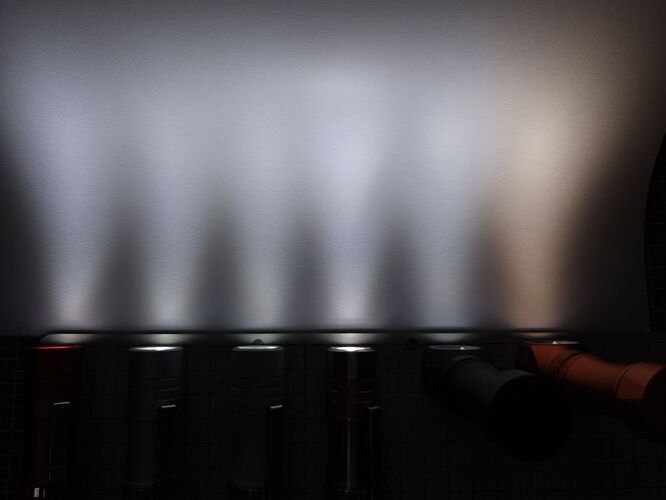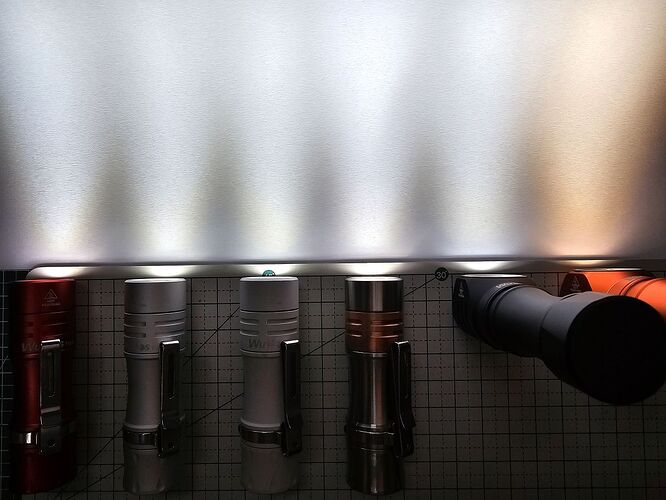I happen to own several TS10 flashlights. The data in my previous post is specifically from the red TS10 with a 6000K LED.
The 6000K version has a significantly lower R9 value than 4000K version, which is well-documented. You can refer to the reviews by koef3 and zeroair for more details:
- LatticePower CSP2323 6000K (Wurkkos TS10, reviewed by koef3)
CRI: 93, R9: 67, Duv: 0.0033 (output level: not specified) - LatticePower CSP2323 4000K (Wurkkos TS10, reviewed by zeroair)
CRI: 96, R9: 91, Duv: 0.0027 (output level: 5/7)
Today, I received two HD10 flashlights I ordered a couple of weeks ago. I decided to compare it with my TS10 collection, as both use the same LED. Interestingly, the Duv values across all samples fall within a similar range. For my measurements, I used the reverse-engineered 3.3.1 app. The output for all lights was measured at level 5/7, with the sensor positioned 50 cm away.
Fig1. Measurements from LM4 3.3.1
Fig2. manual mode WB set at 5000K
Fig3. auto mode
Regarding your comment:
I don’t believe the CSP2323 has ever been advertised as R9080. At least, I haven’t seen credible evidence of the 6000K version achieving high R9 values. However, the 4000K version consistently demonstrates high R9 in numerous instances. For example, I recently ordered an HD10 with a 4000K LED, and the specifications appear unchanged for that CCT.
On the other hand, the 6000K LED in my latest purchase has the lowest R9 value (below 50) among my TS10 units and exhibits the strongest green tint (although not by much). Of course that R9 number should not be taken seriously. I think it would be useful only when I compare them with my other measurements.


